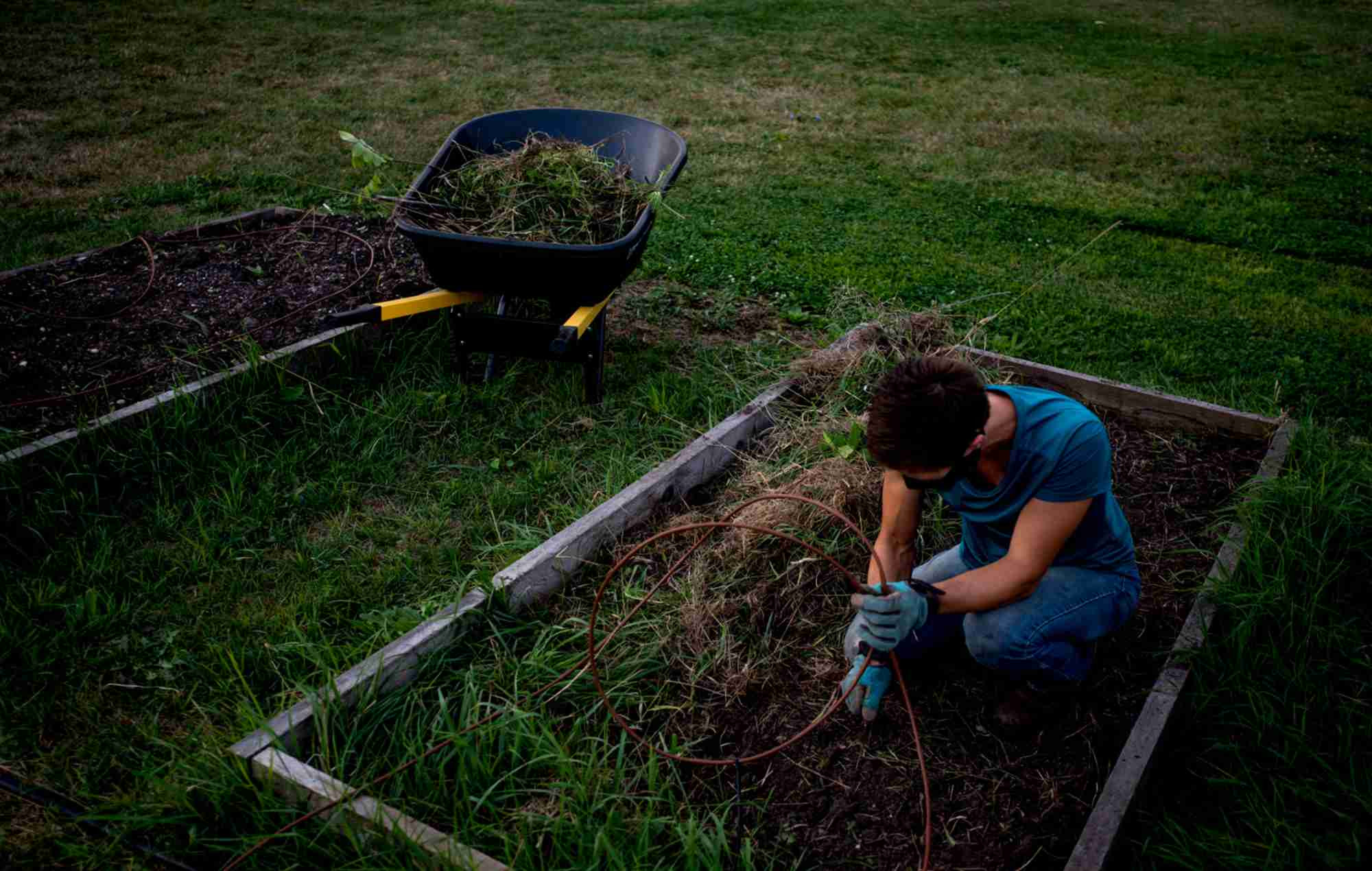Protecting Watersheds and Making Due on the Kitchen Table with Amanda Buday
Some faculty make it look easy. They arrive at GVSU and in what seems like no time, they are fully embedded in local projects with lots of moving parts. What is their secret?
Assistant Professor Amanda Buday (Sociology and Environmental Studies) has been at GVSU fewer than 2 years, but already has made productive community partnerships.
She explained that her dissertation work involved field studies and that meant attending the meetings of relevant organizations. As a person working in areas that the organizations shared, she learned to “show up and listen.”
Even with that background, moving to a new area and starting again while settling into department life and teaching could be daunting.
When Amanda arrived at GVSU, she knew making these connections to organizations would continue to be vital to her work on community-based efforts to protect natural resources. The Annis Water Resources Institute (AWRI) was an obvious contact to make. Her reading soon showed her that Rick Rediske was working with activist community groups and state agencies to address PFAS contamination. Al Steinman was working on other projects with direct relevance to her interests.
Soon she was attending meetings of the Muskegon Lake Watershed Partnership,[1] which works closely with the West Michigan Shoreline Regional Development Commission[2] on Muskegon Lake restoration projects.
“Ecological remediation has been ongoing in Muskegon, but there is also social justice work to be done. As a sociologist, I want to connect people to the lake. Muskegon Lake has an industrial history. To get people to see the scenic beauty and ecosystem
services provided by the lake is a hard task given the lake’s legacy,” Amanda observes. Attending the meetings helps her pick up the history and learn what is important to stakeholders.
Due to the pandemic, focus group work that Amanda, Dani DeVasto (Writing) and Sean Woznicki (AWRI) had planned in Muskegon was suspended. Door-todoor surveys by students planned for the fall were also necessarily on hold.
“It’s frustrating and hard to see the path forward,” Amanda admits. “The wind went out of our sails on that project.”
Wind has a habit of kicking back up, thankfully, and Amanda has other projects. The Ottawa Conservation District has been working with Rick Rediske on a management plan for the Pigeon River watershed.
The Michigan Department of Environment, Great Lakes, and Energy (EGLE) has asked that the data used to develop the watershed management plan include social indictors of residents’ perceptions of water quality and knowledge and use of best
practices to promote water quality.
“We’ll use a Social Indicators Data Management and Analysis tool managed by MSU that is intended to standardize social science data collection across the Great Lakes basin. We have to pay attention to people who live in the environments we are trying to
remediate because their actions affect the impact of this work,” Amanda explains.
Wrestling with the logistics while working from home had its moments. “Sending five rounds of survey mailings to 900 watershed residents from home was challenging. Ottawa Conservation District funded one undergrad research assistant, materials and postage. I stuffed many envelopes on my kitchen table.”
“There was a second delay, too. Anna Hammersmith (Sociology), Bradford Dykes (Statistics), and I have been working to create a Social Science Data Center in AuSable Hall. There has been no dedicated space for sociology students to work on large datasets or compile original datasets from survey research. We wanted a computing center near our offices.”
“A lone student colonized an office to use a single computer for now,” Amanda said. “Speed-bumps.”
Is this sort of community engagement work possible within the constraints of courses?
“The 15-week timeline is tricky. Years of relationships with community partners and hard-won understanding of the stakeholders’ needs as well as the necessity to produce a product make that hard. If something can be chunked out to fit the 15 weeks, that could be a component in the future,” Amanda explains. “We need to be very careful about any promises we make and remain conscious of what students can accomplish in 15 weeks. GVSU’s reputation is at stake. Most projects run a couple years.”
“My research assistant is clearly going to be successful in life,” Amanda predicts. “But it is also important to engage the less stellar students with care and a lot of quality control and accountability checks. It is more oversight, but worthwhile.”
Is she still on the lookout of additional partnerships? Amanda says she’s “up to the eyeballs” and still looking. “Sometimes you spot
something in emails from the Governor’s office, the DNR[3], or EGLE[4]. It might be years, but hopefully they’ll give me a call.”
“Since almost all of Michigan lies within the Great Lakes Basin, our surface waters eventually end up in one of the Great Lakes, so it’s important that we take care of our local waterways. A management plan provides watershed monitoring data and sets goals
and benchmarks – it’s the bones of a remediation plan. Increasingly, they include social science data on stakeholder attitudes and behaviors. There is also 319 funding available to help watershed organizations and conservation districts develop their management plans. The funding comes from EPA to EGLE to the Conservation District and then to us for research.
Learning how all this works from colleagues like Rick and Al is invaluable.”
Notes
[1] An independent nonprofit, the MLWP’s area of endeavor is the immediate drainage area of Muskegon Lake as well as Cedar and Mosquito Creeks. The MLWP is organized for charitable, educational, and scientific purposes and is a coalition of community interests working cooperatively to improve the Muskegon Lake ecosystem.
[2] WMSRDC provides services and programs in transportation planning, economic development, environmental planning, community development, local government services, etc.
[3] Michigan Department of Natural Resources.
[4] Michigan Department of Environment, Great Lakes, and Energy.


